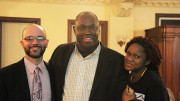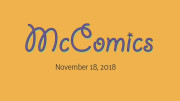The Hip Hop/Rap genre of music has drawn criticism from music enthusiast and common folk alike since its creation in the early 80’s. Since then, rap music has evolved into something much greater and arguably is starting to eclipse rock and roll as the most popular music category.
Just like other music styles before it, during hip-hop’s evolution began to spawn off sub-genres such as Alternative, Drill, Boom Bap, and of course Trap. Trap Music, not to be confused with the Electronic style of the same name, is a style of rap music that originated from the streets of Atlanta, Georgia.
Trap is traditionally defined by its distinctive hi-hat patterns and thumping bass that give it its aggressive and “in your face” sound. Trap music began to reach its pinnacle when rappers like Young Jeezy and Gucci Mane burst on to the music scene with mainstream hits. This allowed Trap to reach broader audiences and it soon became the genre of choice for sports pregame warm ups and parties alike.
Besides the fact that the instrumentals that accompany it are so unique, the flow of lyrics in Trap music is typically much slower than it’s early hip-hop predecessors. More often than not, the lyrics can’t be understood at all by solely listening to them. The lyrics that can be heard are usually about drug use and sale, violence, and other hardships of growing up in lower class impoverished America.
The vulgarity of trap music is probably what draws it’s biggest criticism and could be considered offensive by many. However, the music is merely a reflection of the environment it was created in. People offended by this music style should instead be offended by the problems in our society that lead to the creation of this style.
Fast-forward to 2015 and we observe the emergence of the rap game’s most popular Trap artist at this time, Future. After the split between Future and his then wife, R&B singer Ciara, Future went on a music spree, releasing 7-projects in a less than 365 day span. Among these projects, were 56 Nights, Monster, Purple Reign, Beast Mode, DS2, and What A Time to Be Alive.
Notorious for his distant melodies and slurred lyrics layered atop beats produced by the equally as popular producer Metro Boomin, Future has taken the game by storm releasing hit after hit. “March Madness” was a summer time anthem; “Big Rings ” was played at the Super Bowl, and “Fly S*** Only” landed Future a deal with Apple Music.
But if his lyrics can barely understood by the untrained ear (yes it takes training to understand what he’s saying) then why is he so popular? Or, is what he is creating even considered music? Well, music is about expression and as much as it pains me to say it, rap music is no longer about lyrics. The simplicity of trap is what gives it universal appeal. It’s not disruptive and can serve as background music to any day-to-day task.
Since it’s not difficult to make, it gives a voice to people who wouldn’t otherwise have an outlet to express themselves. Rap music is evolving and the success of Trap music evidences that. So to all those Trap haters, have an open mind and approach the music differently and you may come out with a new favorite Song or two.




